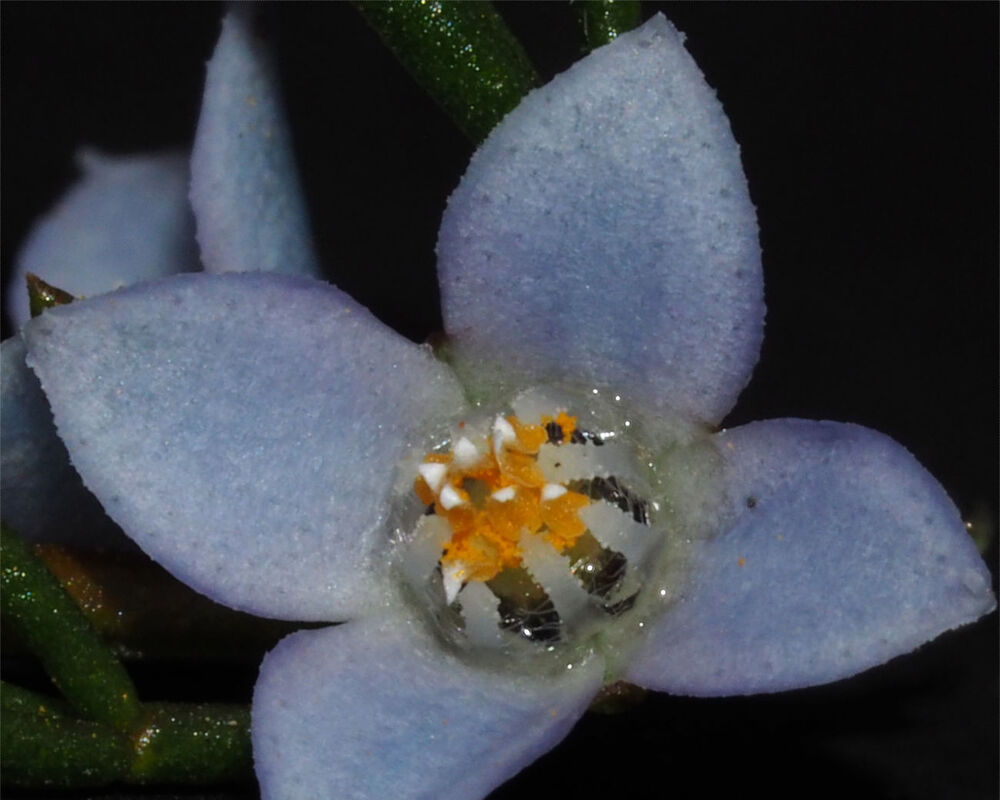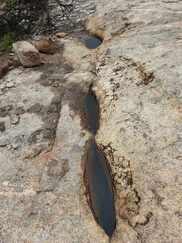Boronias are in the Rutaceae family, which is characterised by open flowers with a superior ovary and leaves containing oil glands.Our domesticated citrus plants are in this family.
Boronias have opposite leaves and four sepals and petals.
Recently Boronias have been split into two genera:- Boronia and Cyanothamnus. There is almost no physical difference between the genera. Two different genetic groups have evolved very similar plant features. A trifle perplexing for the amateur, but such is modern taxonomy.
Male and female parts are clustered together in a tight group. Images of Cyanothamnus ramosus below show that a barrier of serrated stamen filaments with coarse hairs prevent insects from accessing nectar from the side. My guess is that these stop ants and other nectar thieves. To get nectar, insect pollinators have to poke their tongue down the top of the flower past the clustered anthers and stigma. To avoid self pollination, the stigma only becomes receptive after the flower's pollen has died.
They look very similar.
Asterolasia pallida (white) and squamaligera (yellow) have a tiny or no sepals and petals with a hairy exterior.
Phebalium tubercolosum (white) and filifolium (yellow) are showy shrubs commonly found in mallee woodland in the east of the district. Phebalium sepals are smaller than petals, and the petals have a scaly or scurfy exterior.
























